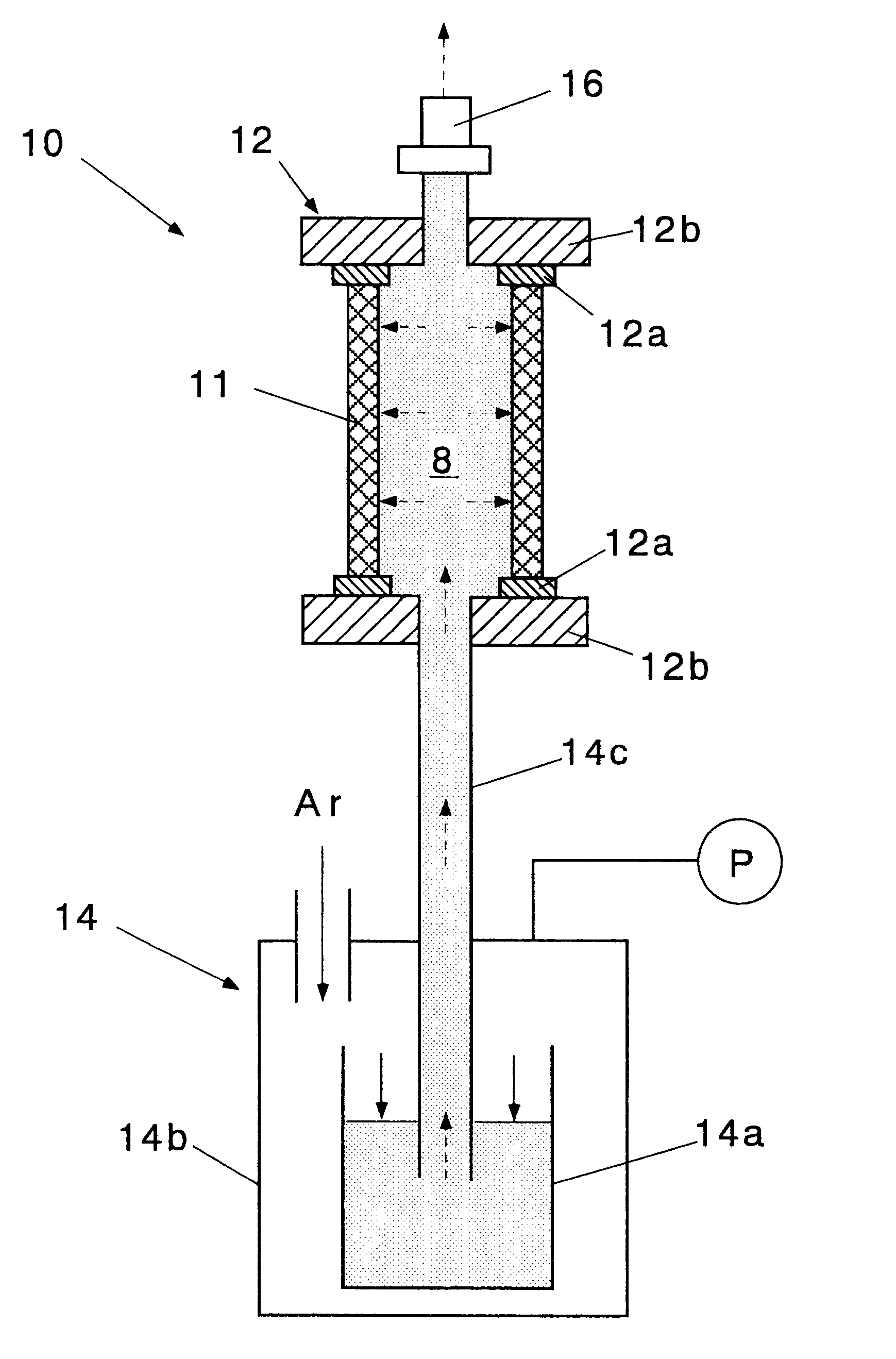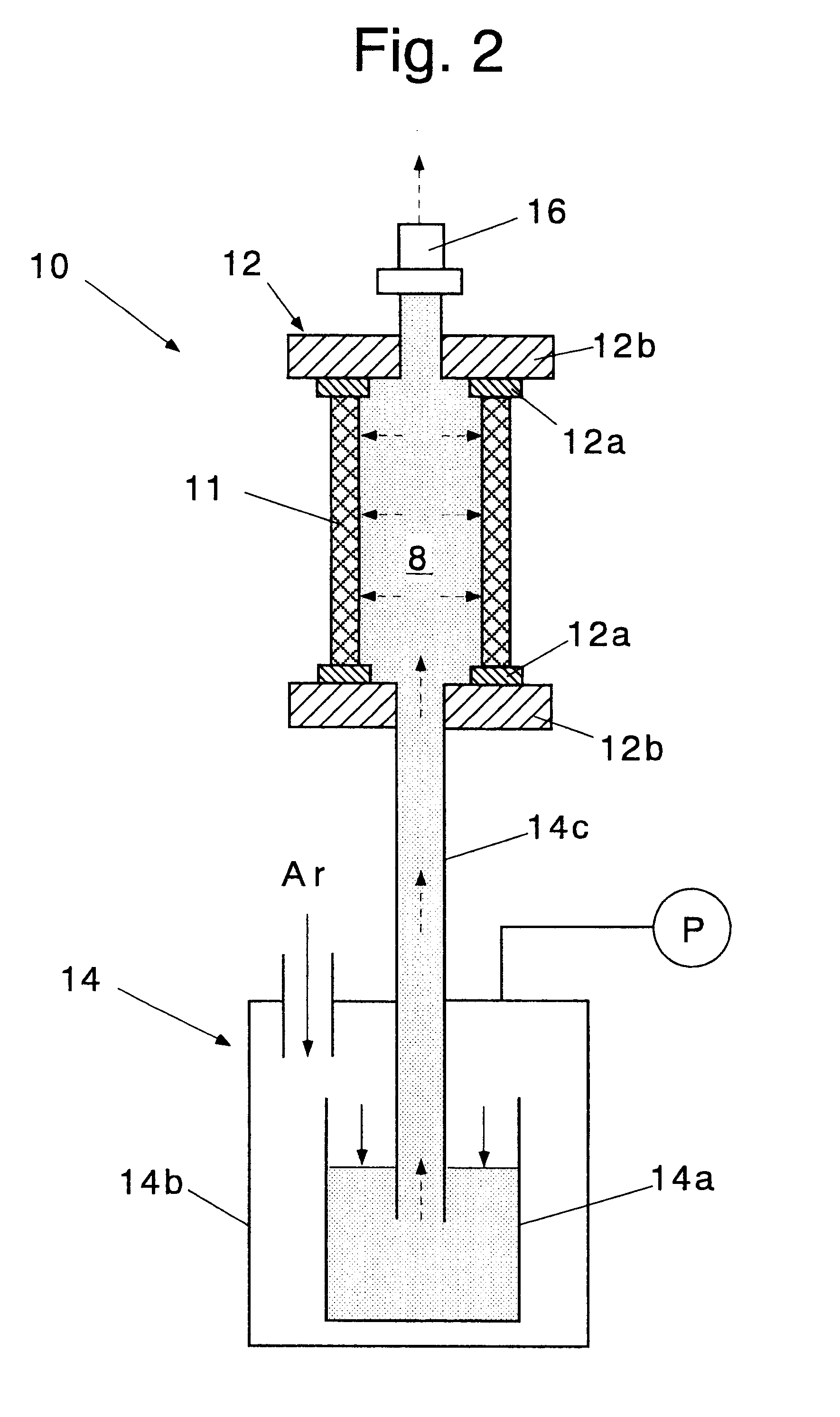Method and apparatus for manufacturing ceramic-based composite member
a ceramic-based composite and airtight technology, applied in the direction of surface layering apparatus, machine/engine, manufacturing tools, etc., can solve the problems of high density, heavy weight, and defects in materials
- Summary
- Abstract
- Description
- Claims
- Application Information
AI Technical Summary
Benefits of technology
Problems solved by technology
Method used
Image
Examples
embodiments
Embodiments of the present invention are described below.
1. Method for Manufacturing Chamber
SiC / SiC chambers were manufactured according to the manufacturing method shown in FIG. 1. Tyranno Lox-M fibers supplied from Ube Industries, Ltd. were used as SiC fibers for the chamber. The fibers were braided on a mandrel, and SiC matrix was infiltrated. To infiltrate the matrix, CVI infiltration process 2, ordinary PIP treatment process 3, and above-mentioned pressurized infiltration process 4 were combined.
2. Leakage Test
A leakage test was performed at 0.7 MPa. A chamber was submerged in water, pressurized with N.sub.2 gas, and gas passed through the chamber was collected and measured to determine the leakage rate. A seal was provided between the chamber and the chamber throat.
FIG. 3 shows results of the leakage test. Even after work was CVI-processed in CVI infiltration process 2 for about one month, there were voids at about 20% of the total volume, and total measured leakage rate corre...
PUM
| Property | Measurement | Unit |
|---|---|---|
| temperature | aaaaa | aaaaa |
| thickness | aaaaa | aaaaa |
| temperature | aaaaa | aaaaa |
Abstract
Description
Claims
Application Information
 Login to View More
Login to View More - R&D
- Intellectual Property
- Life Sciences
- Materials
- Tech Scout
- Unparalleled Data Quality
- Higher Quality Content
- 60% Fewer Hallucinations
Browse by: Latest US Patents, China's latest patents, Technical Efficacy Thesaurus, Application Domain, Technology Topic, Popular Technical Reports.
© 2025 PatSnap. All rights reserved.Legal|Privacy policy|Modern Slavery Act Transparency Statement|Sitemap|About US| Contact US: help@patsnap.com



